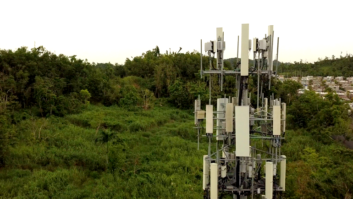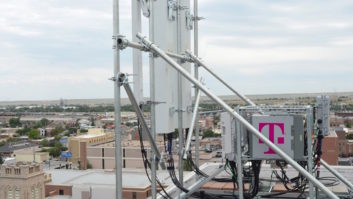Bellevue, WA (August 17, 2017)—T-Mobile has made good on its promise to begin lighting up new 600 MHz services in August, announcing that its first network site, in Cheyenne, WY, is now live.
“Damn that was fast,” begins T-Mobile’s press announcement, released August 16. Barely two months after the carrier received its licenses for 31 MHz, or nearly eight billion dollars-worth, of prime UHF airwaves nationwide, T-Mobile clearly plans to roll out its new services at breakneck pace.
“Buckle up, carriers. Because the Un-carrier’s 600 MHz network just got real,” crows John Legere, president and CEO of T-Mobile.
T-Mobile’s statement reveals previously undisclosed details of the geographic areas it has earmarked for initial deployment, which it says will encompass 1.2 million square miles. By the end of 2017, says the company, it plans to light up additional 600 MHz network sites in Northwest Oregon, West Texas, Southwest Kansas, the Oklahoma panhandle, Western North Dakota, Maine, Coastal North Carolina, Central Pennsylvania, Central Virginia and Eastern Washington as well as Wyoming.
The only thing standing in T-Mobile’s way—if anything—in any market is incumbent low-power broadcast facilities. And while the FCC has laid out a multi-phase frequency repack schedule for TV stations participating in the recent Incentive Auction that stretches beyond the next three years, T-Mobile has a plan for that, too. In a recent filing with the FCC, the carrier committed to providing financial assistance to any local TV stations that can move earlier. T-Mobile has also partnered with PBS and its nationwide network to cover the costs for local public television low-power facilities that must relocate in the spectrum repack.
As T-Mobile boasts, its 600 MHz spectrum licenses “can cover every single American across the nation with low band spectrum that reaches twice as far and is four times better in buildings than mid-band.” Those propagation properties have been enjoyed by wireless microphone operators for many years. But as this news indicates, access to the 600 MHz band is about to be taken away in states across the country much sooner than the FCC’s plan suggested.
A letter, dated August 14, sent by T-Mobile’s senior manager – spectrum management, Mark Bishop, to mic manufacturers and other relevant parties, states that the company is “planning to deploy commercial wireless services in some or all of our owned Spectrum blocks in the attached list of counties.” T-Mobile requests that “all use of spectrum in the indicated channel blocks cease prior to November 1, 2017.”
The list of counties affected by T-Mobile’s November 1 deadline is too long to reproduce in full here but covers portions of major population centers such as Chicago, Phoenix, Dallas, Austin, San Francisco, Denver, Oklahoma City, Milwaukee and Albuquerque.
As noted in the letter, the spectrum acquired by the carriers, which is known as wireless band 71, is divided into 5 MHz chunks and therefore does not neatly correspond to the 6 MHz-wide TV channels. For example, block B in the band 71 download spectrum covers 622 to 627 MHz, straddling TV channels 39 and 40.
Bishop also states, “We wish to minimize the interference with the wireless base stations and handsets that will operate in the new band and we want to avoid disruptions to any operations currently in use.”





